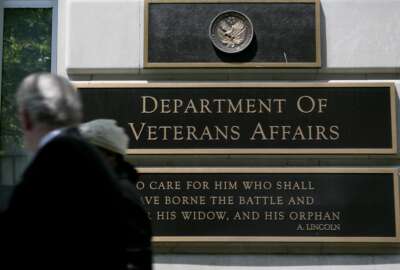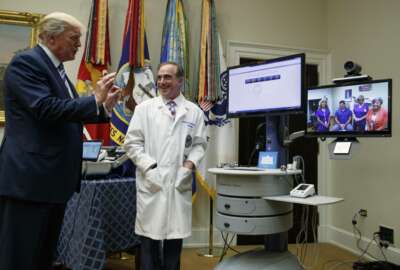
VA’s meteoric telehealth expansion poses new questions for the future
The Department of Veterans Affairs is considering the next steps for telehealth, after it expanded the program by 1,831% last year.
The Department of Veterans Affairs is plotting the path forward for its telehealth program after the pandemic prompted a meteoric expansion of virtual care appointments in a year.
Between January 2020 and 2021, the number of VA telehealth appointments increased by 1,831%, John Boozman (R-Ark.), ranking member of the Senate Appropriations Military Construction and Veterans Affairs, said Wednesday at a hearing on the agency’s virtual care capabilities.
In January 2020, the department facilitated about 41,000 telehealth appointments. By April, a month into the pandemic, veterans used telehealth for more than 393,000 appointments
And in January 2021, veterans used telehealth for 798,000 appointments and another 965,000 virtual appointments last month alone, Boozman said.
“It isn’t easy to institute this type of change in any large organization, and the speed with which VA did so is truly remarkable,” he said.
To get there, the department moved its existing VA Video Connect platform to the cloud, which Jack Galvin, VA’s associate deputy assistant secretary for development, security and operations, said stabilized the program as more users wanted to use it.
VA also expanded its bandwidth, he said. Before the pandemic, VA had roughly 40,000-to-50,000 remote users on any given day. Today, the department’s systems are supporting between 100,000-to-120,000 remote users, Galvin said.
Before the pandemic, VA provided most of its telehealth appointments from one agency clinic to another, meaning VHA doctors from one agency facility saw patients virtually at another clinic or hospital.
Today, patients connect from their homes for 97% of VA telehealth appointments. Many VA clinicians are seeing patients from their homes as well.
“Providers have become comfortable working out of their home, taking care of veterans in their homes,” said Dr. Kevin Galpin, executive director of telehealth for the Veterans Health Administration.
To facilitate those appointments, the department distributed more than 48,000 web cams to VA providers and more than 84,000 iPads directly to veterans.
VA also added more personnel to run its telehealth help desk, which can troubleshoot problems and answer questions from both veterans and providers. Staffing at the help desk increased by 500% during the pandemic, Galpin said.
But while VA has been able to quickly ramp up its own telehealth capabilities, expanding its reach to veterans in more rural and remote locations has proven more difficult.
Veterans from more urban locations are using VA telehealth with more frequency today than their rural counterparts, Boozman said.
In fiscal 2019, 45% of VA telehealth appointments went to veterans in rural or remote locations, with urban veterans using the program for the remaining 55%, he said.
Today, 32% of VA telehealth appointments are going to rural veterans.
VA has initiatives that attempt to bridge the “digital divide” for veterans without reliable broadband or the right device to connect with the department.
VA providers, for example, can refer veterans who need help finding reliable Internet access with a social worker, who will help them apply for subsidies with the Federal Communications Commission. In other cases, the department has partnered with mobile and internet companies and has loaned iPads directly to veterans.
“It’s a very difficult project for us to address all on our own,” Galpin said. “This is a governmentwide project, something that we need to work on with government but also the community and private sector.”
Those questions are part of the vision VA recently outlined in a five-year strategic telehealth plan. Galpin said the plan envisions a scenario where veterans can connect with VA from anywhere, anytime.
The pandemic, he said, has taught VA how it can maneuver staff in a virtual space to respond to veterans’ needs. VA providers at a urban facility can see patients in rural locations, or vice versa.
“We’ve also learned how important it is to have that flexible workforce,” Galpin said. “Because of all this transition and change in location of care, we probably have the most flexible workforce we’ve ever had before. Providers now are comfortable working out of their homes, taking care of veterans in their homes.”
Copyright © 2025 Federal News Network. All rights reserved. This website is not intended for users located within the European Economic Area.
Nicole Ogrysko is a reporter for Federal News Network focusing on the federal workforce and federal pay and benefits.
Follow @nogryskoWFED





